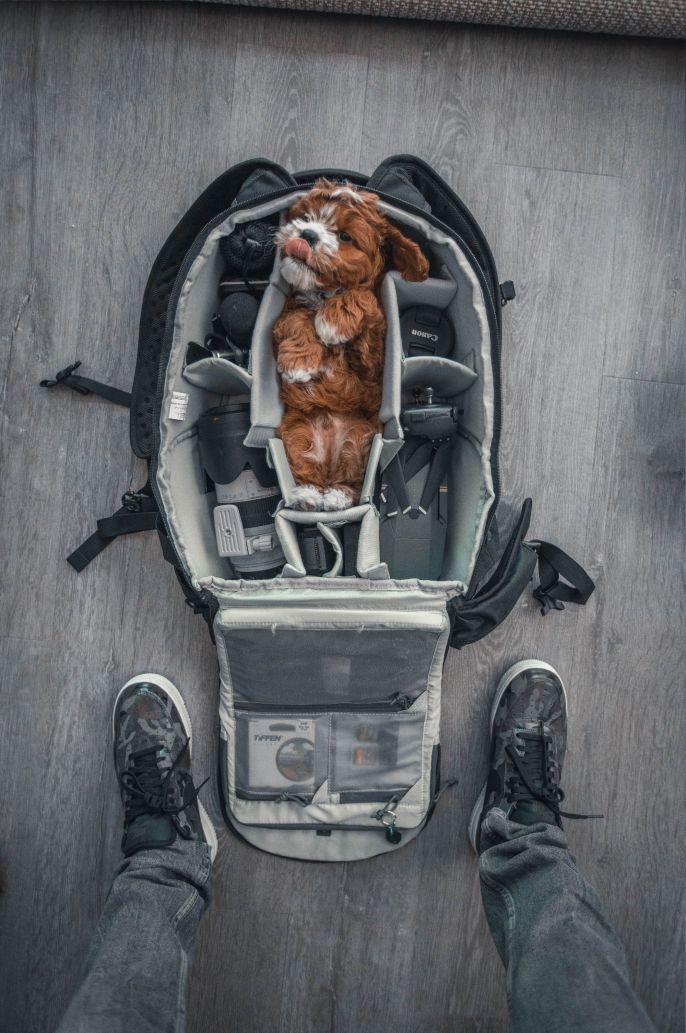How to Travel Abroad with a Pet
Can I take my pet abroad with me?
Our pets are our best friends. They offer unconditional love, support, and laughter in a sometimes dreary world. Moving to another country and taking solo trips can seem intimidating and lonely. Why wouldn’t we want to take our furry (or maybe not-so-furry) companions with us on our adventures abroad?
Here’s where some roadblocks come in: finances, stability, and country entry requirements are the usual suspects. Bringing a pet to another country requires extensive planning and foresight, and is expensive. Additionally, air-travel is often stressful for pets. Many travelers come to the difficult decision to leave their beloved friends with friends or family or even to give them up for adoption.
For others, it’s non-negotiable – no one gets left behind. If you’re hoping or planning to travel with a pet, take the time to prepare properly so it’s smooth sailing for everyone!
Before you go: things to consider
It’s important to think long and hard about your pet’s well-being and life in a foreign country. Will you have the proper resources to care for them and ensure their happiness? Would they suffer long-term negative effects from a lengthy quarantine? Think about their age and existing medical conditions – these are factors on whether a country will allow them in. There may also be diseases in your destination country with no known immunizations – like Avian flu – that your pet could contract.
Research the specific country requirements for animal transportation at least a year before you plan to move. Disease transmission will be the biggest hurdle to get over, particularly rabies in dogs, cats, and ferrets. A six-month pre-travel quarantine may be mandatory for some countries, which is often a deal-breaker for many people unwilling to subject their pets to the stress.
Your pet will need a full examination by a USDA veterinarian (if you’re travelling from the United States) and a health certificate. Certificates may also need to be translated and notarized by a foreign consulate in your home country. The majority of the European Union has now begun requiring implanted microchips in cats, dogs, and ferrets, which track any vaccinations and certificates registered with the animal.
Examinations, microchips, and notarization are expensive. Be honest about your finances and decide if you’re able to undertake all of the necessary steps above to take your best friend with you.
While en route
Some airlines allow small pets in the cabin, but in many cases you will need to check your pet’s carrier. The cargo hold for checked baggage may be affected by air pressure and the outside temperature, so think about the time of year you’re travelling and find out detailed information about the air pressure. Long, indirect flights will be more stressful for an animal. Flying can be especially dangerous for dogs and cats with “pushed in” faces (Persians, pugs, bulldogs), as their narrow nasal passages put them at risk for oxygen deprivation and stroke.
Make the container or kennel for your pet as comfortable and familiar as possible in advance. Research any requirements by an airline on type and size of a kennel or container.
Are you are pressed for time when planning your move, consider a pet relocation service. This will be expensive, but will assure a safer transportation for your pet.
Coming home
Don’t forget that your home country will also have requirements for returning pets (and humans)! If you’re returning to the US, some states may require a quarantine and proof of rabies immunization.
Finally, after jumping through all the right hoops, make sure there’s plenty of food, soft beds, cuddles, and love waiting for your pet when they come home (here or abroad). It’s expensive and a long process, but taking pets with you can be worth it for the companionship and comfort of a familiar face while plunging into the unknown.
Need some more resources?
For more safety advice, read this Humane Society of the United States article.
Need to research the policy of a specific airline, shop for carriers, or find a private pet relocation company? Check out PetTravel.com.
For a list of USDA veterinarians in your state, go to the Animal and Plant Health Inspection Service (APHIS) website to find out how to contact a NVAP Coordinator. Find the regulations and requirements all fifty states and there as well.
Find more flying tips on the International Air Transport Association (IATA) website.



